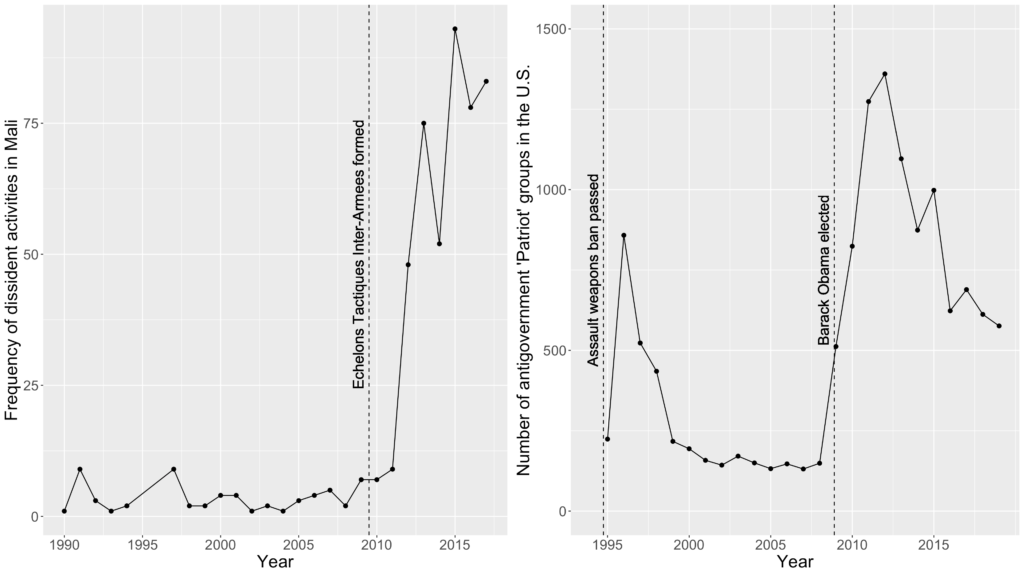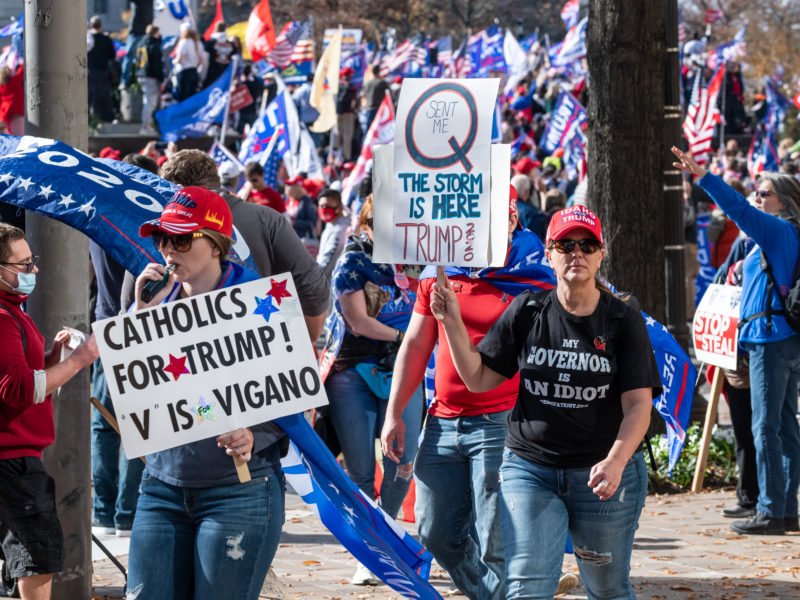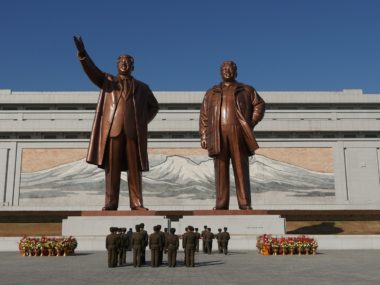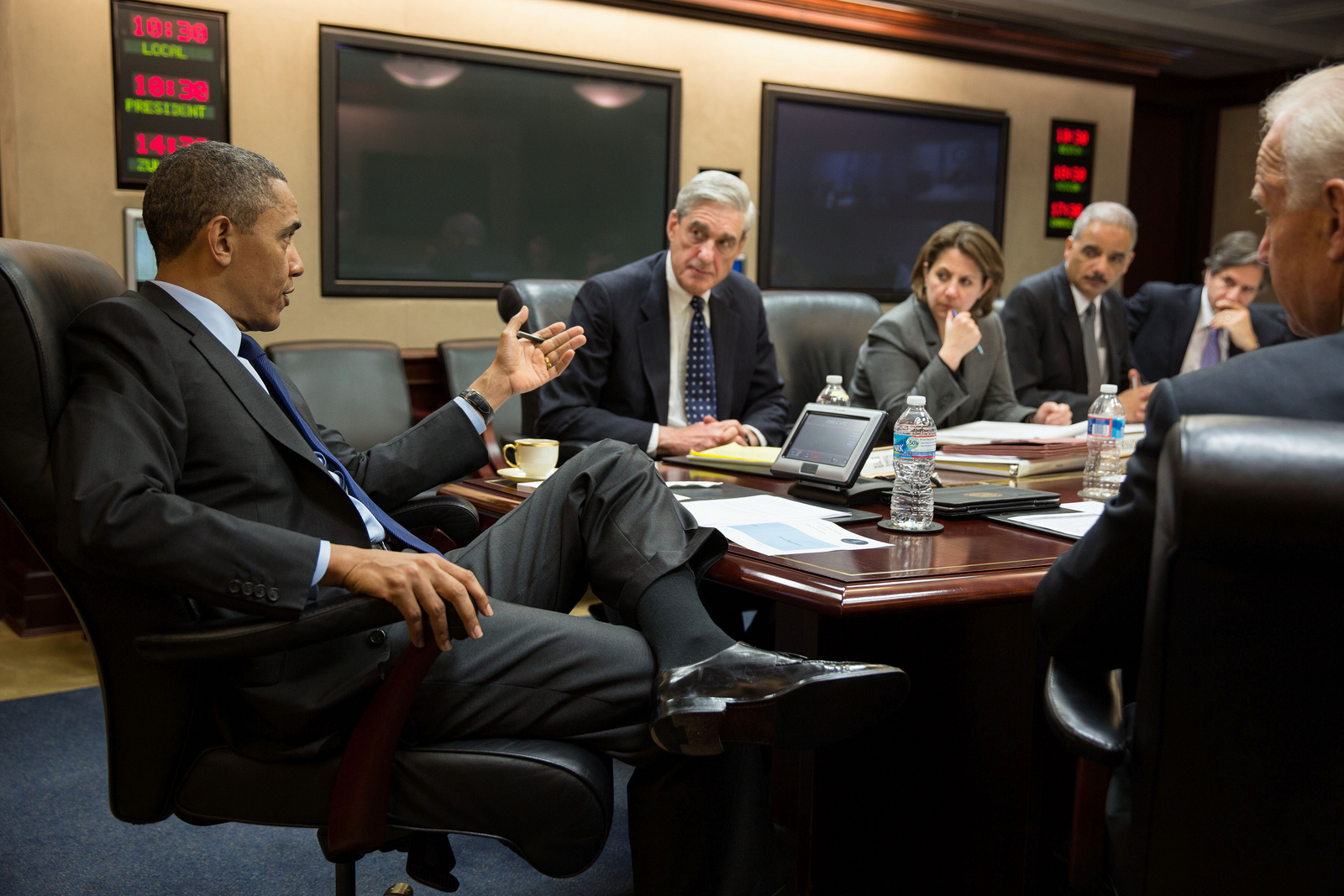Guest post by Todd Lehmann and Scott Tyson
The storming of the US Capitol by a mob of Trump supporters on January 6, 2021, shined a light on the growing importance of extremism, most notably by supporters of QAnon, a network of individuals who espouse a bizarre web of conspiracist beliefs. While not everyone in the mob was a radical extremist, a large majority of its participants seem to have embedded themselves in some alternative reality, where anti-government sentiment is a major theme. A public debate has since emerged about how to best address these new forms of radical right-wing political extremism.
Recently, policymakers, scholars, and journalists have suggested that the best way to combat these growing threats, specifically from QAnon, is by targeting the leaders and influencers within the QAnon community, a concept in the counterterrorism field referred to as “leadership decapitation”—which can include arrests, and freezing financial assets, among other things. In a forthcoming publication, however, we argue that such focused tactics may backfire by creating incentives for those individuals to ratchet up their radicalization efforts.
There is clear real-world evidence to support this notion. The plots below provide examples of extremist activity following perceived government threats in two otherwise disparate countries: Mali and the United States. The left plot shows a spike in radical jihadist and separatist activity in Mali after 2009, when Malian counterterrorism units were formed and began receiving US military training. The right plot shows two spikes in the number of US far-right anti-government groups, the first following the events of Ruby Ridge, Waco, and the 1994 Federal assault weapons ban, and the second following the 2008 presidential election, when there was widespread fear among the far right that the Obama administration would enact strict gun-control measures.

If efforts to reduce radicalization by targeting leaders can backfire, a more nuanced approach to combating extremism is needed, and one that is more focused on how groups are organized and managed.
Scholars and practitioners who study ways to counter violent extremism mostly focus on the psychology underlying individuals’ susceptibility to becoming radicalized, where prominent examples include personal victimization, social disruption, and political grievances. But why do some politically motivated groups radicalize people at all? Is it simply that leaders receive some direct benefit—financial or otherwise—from having like-minded adherents? Or perhaps radicalized individuals are more easily managed within a loosely organized group?
We offer a different argument: radicalization is a political tool for opposition leaders because it deflects government repression against them.
What does it mean for a person to become radicalized?
Radicalization is used by a number of political groups opposed to the government. There are striking parallels between the radicalization methods used by ISIS and QAnon, several of which come from A Course in the Art of Recruitment, a manual originally created and circulated by Al Qaeda. In recent years, the Internet has become a primary means for radicalization by these groups. Propaganda and conspiracy theories are posted and spread online, all designed to engender extreme anti-government beliefs among the population.
As a result of online radicalization efforts, in the last few years, there have been several “lone wolf” incidents associated with far-right extremism. Most notably in the case of QAnon, in December 2016, Edgar Maddison Welch raided Comet Ping-Pong in Washington, DC, in search of child sex slaves he believed were being hidden in the basement by Democrats—the restaurant didn’t have a basement. Welch had been radicalized online by conspiracy laced content referred to as “Pizzagate,” which would later morph into QAnon.
Radicalization is not just a process that instills a commitment to a set of extreme beliefs. Rather, it is also a process that engenders self-motivation to act against the government without an opposition group’s express control, coordination, or logistical support, in the same manner as Welch’s self-motivated raid on the DC pizza parlor. This self-motivation to act against the government can manifest in many ways and need not occur solely through lone wolf incidents—they are simply the most visible example of this type of behavior. Radicalization also leads people to evaluate economic tradeoffs differently, which is why participants in the January riot were not exclusively (or even mostly) made up of the economically downtrodden, as observers have noted.
How is developing self-motivated followers a valuable political tool?
In our research we show that because self-motivated individuals act without a central leadership’s direct support, radicalization actually makes opposition leaders less instrumental in organizing and producing political dissidence. This, in turn, reduces the incentives of government agencies, such as the FBI or Department of Homeland Security, to target opposition leaders as aggressively, because eliminating the leaders will not reduce acts perpetrated by radicalized individuals. Thus, radicalization creates a kind of strategic protection for opposition leaders.
What policies help combat efforts to radicalize citizens?
When looking at the 1/6 participants, other factors—such as economic wellbeing—matter for understanding their participation, but these factors also matter for understanding radicalization efforts by opposition leaders. As economic conditions decline, it is relatively cheaper to invest in radicalization; and easier to attract other non-radicalized followers who are motivated by poor economic prospects. Since the COVID-19 pandemic began there have been massive reductions in the economic wellbeing of many Americans, amplified by significant spikes in unemployment. Worsening economic conditions produce both a greater effort to radicalize people and a higher level of political dissidence—both because of increased radicalization, but also because of increased participation by non-radicalized people. Consequently, improving the state of the economy—through a robust and wide-reaching relief package—will reduce efforts to radicalize as well as participation in dissident movements.
How should we expect radicalization efforts to change in response to the recent de-platforming of people who routinely circulated extremist content on Twitter, Facebook, YouTube, and Parler, which specifically targeted QAnon followers? In short, decreasing access to propaganda can backfire. Efforts that make it harder to reach people only increase opposition leaders’ radicalization efforts. But our research also shows that the impact of de-platforming on the total amount of political dissidence varies from case to case, so the long-term impact of de-platforming is hard to predict.
The QAnon movement has been radicalizing everyday Americans for several years, and scholars, journalists, and policymakers were slow to raise the alarm. This slow response was due in part to a failure to recognize the implications of radicalization as a political tool. Our work emphasizes the need for more thought and attention in order to better understand radicalization’s political uses, including greater effort to develop clear concepts and concrete measures so that experts can evaluate the causes and consequences of radicalization more effectively.
Todd C. Lehmann is a PhD Candidate in Political Science at the University of Michigan. Scott A. Tyson is an Assistant Professor in the Department of Political Science and a Research Associate in the W. Allen Wallis Institute of Political Economy at the University of Rochester.







